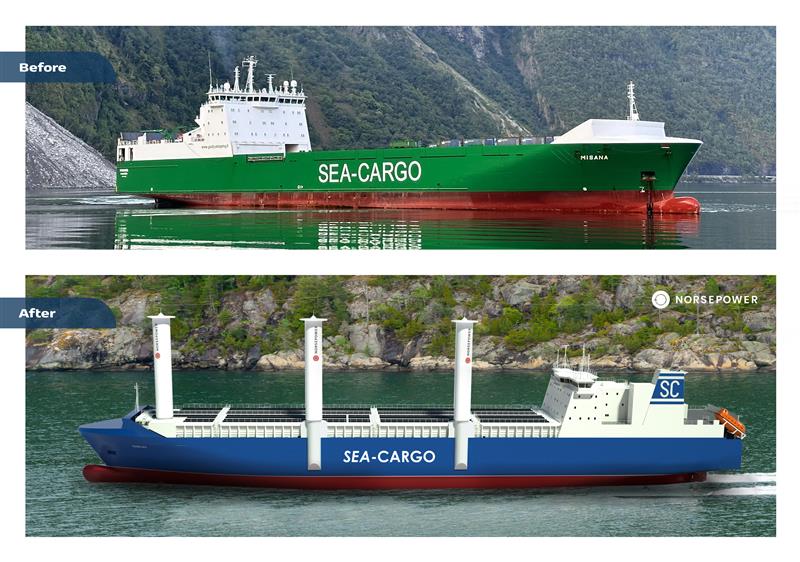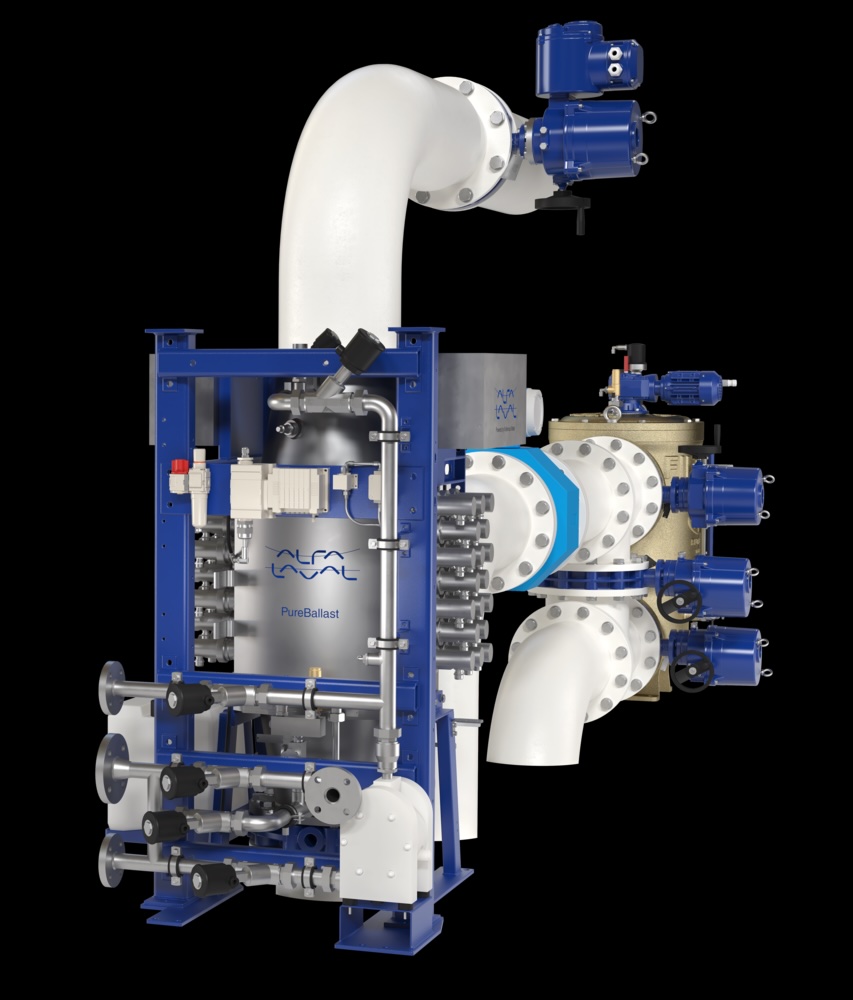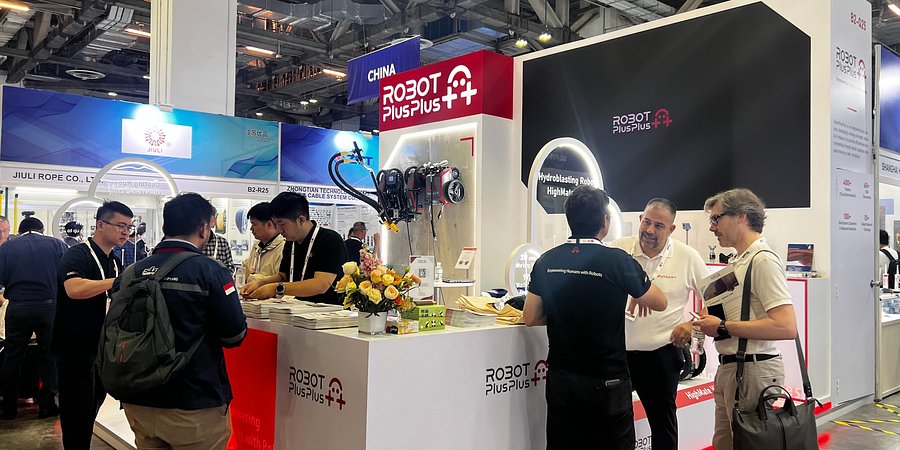The first voyages of the Blue Visby Prototype Trials took place in March/April 2024 with the bulk carriers M/V Gerdt Oldendorff and the M/V Begonia, which, under voyage charter to Blue Visby Consortium member CBH Group, performed ballast voyages to CBH Group’s Kwinana Grain Terminal, Australia.
The Prototype Trials resulted in CO2 savings of 28.2% for M/V Gerdt Oldendorff and 12.9% on M/V Begonia meaning on average 17.3%, measured against the Vessels' respective service speeds of 14 knots. In the case of the M/V Gerdt Oldendorff, the Prototype Trial resulted in CO2 savings of 7.9% measured against the vessels intended voyage speed of 12knots. If the vessel was required to speed up to 14 knots for example to meet a laycan then the potential CO2 savings would have been 28.2%.
A number of alternative benchmarks were tested in this regard involving speed, RPM, laycan dates and "Business As Usual" assumptions. The parties also had a choice as to whether to calculate the financial value of fuel savings and of the prolongation of the ocean passage by using contract rates or market rates provided by the Baltic Exchanges (also a Blue Visby Consortium member). The parties reached commercial agreement as to the applicable benchmark for the purposes of the benefit-sharing mechanism.
The level of CO2 savings in the CBH Prototype Trials was consistent with studies that had been conducted previously: (a) during the Pilot Program in 2023, during which ten voyages produced an average of potential CO2 savings of 18.9%; and (b) in a series of hindcast simulations of 284 voyages in November 2021-August 2023, which had produced potential CO2 savings of 25.6% on average.
In the course of these Prototype Trials, all components of the Blue Visby Solution were deployed and subjected to rigorous testing: software, technical and operational system, as well as the benefit-sharing mechanism ("Blue GA").
It was also demonstrated that the Blue Visby Solution does not interfere with weather routing, voyage planning or the timing of berthing – all of which were left in the hands of the participants. Indeed, the robustness of the operational side of the Blue Visby Solution prevented disruption of the Prototype Trial during a time when one of the vessels needed to deviate.
From a wider perspective, the data collected during the CBH Pilot Program in 2023 and the CBH Prototype Trials in 2024 are consistent with earlier studies and hindcast simulations of 20,580 voyages worldwide of 3,651 Panamax vessels in 2022, which showed potential CO2 savings by applying the Blue Visby Solution in the order of 23.2% (median).
The accumulating evidence demonstrates that the systemic optimisation of the ocean passage can deliver substantial reductions in emissions, in a way that is compatible with the commercial and contractual structure of bulk maritime trade, and without causing disruption, as the Blue Visby Solution does not interfere with voyage planning or with cargo operations. The Blue Visby Solution requires no CAPEX, is compatible with any other measure for reducing emissions, while its unique benefit sharing mechanism removes the obstacle of split incentives and can create financial benefits for all participants.
The CBH Prototype Trials are part of a wider program across many geographical areas and market segments, involving more members of the Blue Visby Consortium: Marubeni, Port of Newcastle and Port Authority of New South Wales. Prototype Trials with a wider group of participants will be conducted in the coming months, as the R&D phase of the Blue Visby is completed and commercial deployment begins.
QUOTES
"Decarbonisation is unattainable without energy efficiency, and energy efficiency is impossible if ships continue to Sail Fast Then Wait. The CBH Prototype Trials demonstrate that the Blue Visby Solution will be a central element of any successful decarbonisation strategy for all maritime stakeholders: shipowners, charterers, traders, cargo interests, terminals and ports.". Haris Zografakis and Pekka Pakkanen, co-ordinators of the Blue Visby Consortium.
"We are very excited to see the results of the first Prototype Trials, conducted with invaluable support from Consortium member, CBH Group. All components of the Blue Visby Solution were tested: contracts, software, operations, and the benefit sharing mechanism. While both the Virtual Pilot Program and the Prototype Trials will continue in the coming months, we are on track for commercial deployment this year". Christian Wounlund, CEO
"The Blue Visby Solution software has been developed over several years. It has received a ClassNK Innovation Endorsement, and is based on systems that are ISO27001 and ISO9000 certified. It uses high-resolution information about weather data, swell, currents and bathymetry in real-time and uses ship-specific performance models. Vessel positions and port conditions are dynamically monitored and assessed. We are very satisfied with all the tests conducted in the course of the CBH Prototype Trials and we will continue to make refinements in upcoming voyages both in the Virtual Pilot Program and in the Prototype Trials". Kimmo Laaksonen, Software Development Lead
"The operational side of the Blue Visby Solution was rigorously tested in the CBH Prototype Trials, both in its interaction with the software systems as well as with the vessels. The robustness of our systems was proven when we had to deal with the operational complexities when one of the ships had to deviate. We have also learned valuable lessons about the outlook of vessels' crews and how they can provide support". Risto-Juhani Kariranta, Marine Operations Lead
source: Blue Visby
The opinions expressed herein are the author's and not necessarily those of The Xinde Marine News.
Please Contact Us at:
media@xindemarine.com

 Sea-Cargo and Norsepower continue their collaborati
Sea-Cargo and Norsepower continue their collaborati  Alfa Laval expands its portfolio with ultrasonic an
Alfa Laval expands its portfolio with ultrasonic an  Alfa Laval PureBallast 3 Ultra secures orders from
Alfa Laval PureBallast 3 Ultra secures orders from  RobotPlusPlus Wows Maritime Professionals with Carg
RobotPlusPlus Wows Maritime Professionals with Carg  Alfa Laval secures first contract for ammonia fuel
Alfa Laval secures first contract for ammonia fuel  GNV Tests RINA’s Machine Learning and Predictive
GNV Tests RINA’s Machine Learning and Predictive